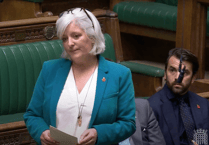With October marking ADHD Awareness Month, attention is turning to how schools can better support children with the condition. Devon teacher Lisa Boorman has spent years in the classroom and in school leadership, and her own experiences have given her a new perspective on what pupils with ADHD really need.
“Everyone seemed to be getting labelled,” she said. “I thought it was just impulsive behaviour.”
An experienced teacher and confident in her ability to manage behaviour, Ms Boorman was convinced that some diagnoses were just simply 'fashionable'.
However, she started to question those beliefs when someone close to her was diagnosed with ADHD.
“It changed everything,” she said. “I realised mainstream schools are not always the right fit, even with the best teachers and support.
“I saw first-hand how important it is for schools to adapt, rather than expecting every child to bend themselves into the same mould.”
That experience now shapes her work at Queen’s Online School, part of the Cambridge Online Education Group.
Ms Boorman believes children who struggle in busy classrooms could thrive in smaller, more flexible settings, where lessons are tailored to each student.
“For some young people, the sheer scale of mainstream schools is overwhelming,” she said. “Add in neurodiversity and the result can be anxiety, depression and withdrawal. We need different doors into education.”
Ms Boorman, who led a Devon secondary school for ten years, said league tables and inspections made it hard to meet every need, and some pupils were easily overlooked.
“As teachers, of course we want to help, but the system is stacked against flexibility,” she said. “It is hard to admit, but there were times when I simply couldn’t provide what certain children needed.”
Ms Boorman says schools need a broader understanding of children’s differences.
“There will always be a place for mainstream schools,” she says. “But it’s important we accept they are not the answer for everyone. Once we stop forcing every child down the same path, we can start to see potential rather than problems.”





Comments
This article has no comments yet. Be the first to leave a comment.